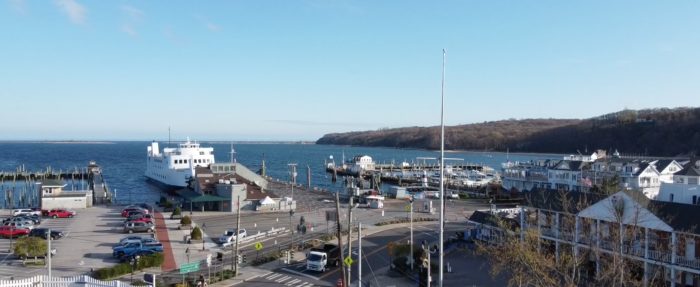Port Jeff civic resurrected, members set their priorities
Over a decade since disbanding, the Port Jefferson Civic Association was back in action Monday, Jan. 9.
Eighteen village residents filled the Meeting Room of the Port Jefferson Free Library, discussing several pressing local issues and establishing their priorities as a body.
Michael Mart was a member of PJCA under its previous configuration. He shared a history of the organization and why village residents have banded together in the past.
“The history and importance of the Port Jefferson Civic Association, as I recall it, was to serve as a vehicle by which individuals come together,” Mart said. “Its concerns are essentially local in nature: streets, safety, recreation, parks and open government.”
He added the civic association “acts to represent opinions, concerns and agendas of its members to the local governing body.”
Mart said PJCA has functioned in various capacities in the past. At one time, it had produced a regular newsletter, held meet-the-candidates events, offered scholarships to local students and even took the village government to court.
PJCA was “a very active group,” Mart said. “It starts small here, like in this room, and makes itself known to other residents, offering to give voice to their concerns.”
The members of the newly formed civic gave introductions, outlined their reasons for joining and discussed their priorities.
Ana Hozyainova, a 2022 candidate for village trustee, organized the event. She stated her goals for the civic body.
“I hope that we can have a group that can be a force for discussion and greater transparency in the village,” she said.
Myrna Gordon discussed communications between the village and residents and other environmental themes. “I would love to see better transparency or communication and more of our village residents getting involved in the important issues that we face,” she said.
Other residents echoed the call for greater transparency within the village government.
Among them, a 2022 trustee candidate for the Port Jefferson school board, Paul Ryan, identified a supposed divide between the public will and the decisions made by elected officials.
“Since I ran for the BOE last year, I’ve noticed a lot of disconnect between what people want and think is important and what is happening, the decisions that are being made,” he said. “I hope as a civic association, we can channel that voice more strongly and more effectively to make positive change.”
Suzanne Velazquez, candidate for village trustee in 2021, spoke of the “sense of apathy that has crept in” among residents. She also considered the civic association as fulfilling a necessary community end.
“I have had a lot of good conversations about the need to revitalize the civic association,” the former trustee candidate said.
Holly Fils-Aime, president of the local environmental group EcoLeague, described continual development within the village as among her priorities.
“We really have to consider how overdeveloped Long Island is,” she said, adding that residents must be vigilant about looking out for their forests, wildlife and the natural environment.
Steve Velazquez echoed this sentiment. He criticized the alleged overdevelopment of Upper Port, arguing that plans for the property that formerly accommodated PJ Lobster House are “not in character with this village.” Velazquez expressed a desire to see a “true historic district” within Port Jeff village.
In common, those in attendance voiced similar concerns over the perceived lack of transparency, environmental issues and the implementation of projects without resident input. Bluff stabilization at East Beach, according to Mart, encompasses each of these themes.
Referencing the $3.75 million the village recently received to construct an upper wall between the East Beach bluff and the Port Jefferson Country Club clubhouse, Mart said the money “is not the issue — the issue is that we didn’t get to vote on it.”
Also in attendance was guest speaker John Turner, conservation chair of the Four Harbors Audubon Society. He advocated for a villagewide open-space program along with a sustainability plan.
Turner pinpointed specific examples on Long Island of progress concerning the environment. He cited the novel irrigation system at Indian Island Golf Course in Riverhead, which uses wastewater from a sewage treatment plant to irrigate the golf course.
“That wastewater is no longer dumped in the river and the bay,” Turner said. “The nitrogen is all taken up by the grass,” averting contamination of local surface waters. He suggested the village could explore comparable wastewater reuse opportunities.
He added, “The other beauty about this water reuse, from a water quantity perspective, is that we have water quantity challenges on the Island. … Using that water for the golf course means that 66 million gallons of water stay in the ground.”
Expressing her vision for the civic, Gordon said the organization could prevail so long as its members stay persistent. “You have to stay the course,” she said. “We can’t get tired. We have to support each other, we have to ask questions, and we have to go in front of our village trustees and ask, ‘What is going on?’”







